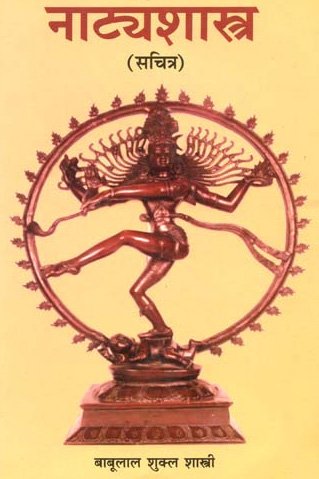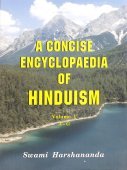Marjana, Mārjana, Mārjanā: 19 definitions
Introduction:
Marjana means something in Hinduism, Sanskrit, Marathi, Hindi. If you want to know the exact meaning, history, etymology or English translation of this term then check out the descriptions on this page. Add your comment or reference to a book if you want to contribute to this summary article.
Alternative spellings of this word include Marjan.
In Hinduism
Natyashastra (theatrics and dramaturgy)
Source: Wisdom Library: Nāṭya-śāstraMārjanā (मार्जना) refers to a set of three rules used in the playing of drums (puṣkara) [with reference to Mṛdaṅga, Paṇava and Dardura] according to the Nāṭyaśāstra chapter 33.
The following are the five mārjanās:
- Māyūrī,
- Ardhamāyūrī,
- Karmāravī.
Accordingly, “these three mārjanās are known to relate to notes of puṣkaras”.

Natyashastra (नाट्यशास्त्र, nāṭyaśāstra) refers to both the ancient Indian tradition (shastra) of performing arts, (natya—theatrics, drama, dance, music), as well as the name of a Sanskrit work dealing with these subjects. It also teaches the rules for composing Dramatic plays (nataka), construction and performance of Theater, and Poetic works (kavya).
Purana and Itihasa (epic history)
Source: archive.org: Shiva Purana - English Translation1) Mārjana (मार्जन) is the name of a rite mentioned in the Śivapurāṇa 2.1.11, while explaining the mode of worshipping Śiva:—“[...] then the rites of Svastyayana, Āśīrvāda (benediction), Mārjana shall be performed. Then Homage, a prayer for forgiveness and Ācamana shall be performed. Repeating the Agha mantras for the expiation of sins namaskāra shall be duly performed. He shall pray with devout feelings. ‘Devotion to Śiva, devotion to Śiva, devotion to Śiva in every birth. I have no other refuge. You alone are my refuge’”.
2) Mārjana (मार्जन) refers to “sweeping” (the ground of the courtyard), according to the Śivapurāṇa 2.3.52 (“The bridegroom’s party is fed and Śiva retires to bed”).—Accordingly, as Brahmā narrated to Nārada: “O dear one, then the clever chief of mountains caused suitable arrangements to be made in the courtyard for feeding the visitors. He caused the ground to be swept (mārjana) clean and scrubbed well. Different kinds of fragrant stuffs were used to make the place attractive and pleasing. [...]”.

The Purana (पुराण, purāṇas) refers to Sanskrit literature preserving ancient India’s vast cultural history, including historical legends, religious ceremonies, various arts and sciences. The eighteen mahapuranas total over 400,000 shlokas (metrical couplets) and date to at least several centuries BCE.
Shaivism (Shaiva philosophy)
Source: archive.org: SardhatrisatikalottaragamaMārjana (मार्जन) refers to “cleaning (the earth)” which is prescribed as one of the operations/ preliminary ceremonies related to the kuṇḍa (“fire-pit”), according to the various Āgamas and related literature. Mārjana is mentioned in the Acintyaviśvasādākhya (chapter 14). The Kiraṇa-āgama (kriyā-pāda, chpater 4), Pūrvakāmika-āgama (chapter 8) and the Ajita-āgama (Kriyā-pāda, chapter 21) mentions Saṃmārjana (“sweeping”).

Shaiva (शैव, śaiva) or Shaivism (śaivism) represents a tradition of Hinduism worshiping Shiva as the supreme being. Closely related to Shaktism, Shaiva literature includes a range of scriptures, including Tantras, while the root of this tradition may be traced back to the ancient Vedas.
Ayurveda (science of life)
Toxicology (Study and Treatment of poison)
Source: Shodhganga: Kasyapa Samhita—Text on Visha ChikitsaMārjana (मार्जन) refers to “washing (the bite-wound)” (with medicinal herbs or other ingredients), according to the Kāśyapa Saṃhitā: an ancient Sanskrit text from the Pāñcarātra tradition dealing with both Tantra and Viṣacikitsā—an important topic from Āyurveda which deals with the study of Toxicology (Viṣavidyā or Sarpavidyā).—Kāśyapa has recommended a slew of generic formulae that successfully neutralise rat poison.—According to Kāśyapasaṃhitā (verse 11.63-65): “Washing (mārjana) with Uśīra, powdered Yava and puffed rice also serve the purpose. A paste of the powder of Arka flower, bark of Śirīṣa, cotton, petals of Kapittha and Aṅkola, mixed with water or milk, must be applied on the wound”.
Unclassified Ayurveda definitions
Source: gurumukhi.ru: Ayurveda glossary of termsMārjana (मार्जन):—Cleaning / sweeping it is method of purification (external) which is used to clean the vitiated land, it takes the physical impurities out.

Āyurveda (आयुर्वेद, ayurveda) is a branch of Indian science dealing with medicine, herbalism, taxology, anatomy, surgery, alchemy and related topics. Traditional practice of Āyurveda in ancient India dates back to at least the first millenium BC. Literature is commonly written in Sanskrit using various poetic metres.
Shaktism (Shakta philosophy)
Source: Google Books: ManthanabhairavatantramMārjana (मार्जन) refers to “massaging (one’s teacher)”, according to the Kubjikāmata-tantra, the earliest popular and most authoritative Tantra of the Kubjikā cult.—Accordingly, “Neither mother, father, brother or relatives help one as the teacher does. Having understood this, whether he suffers when there is (cause for) suffering or is happy when there is (cause for) happiness, he should not, even unwittingly, assume a position contrary to (the one his) teacher has. Sitting next to him (the disciple) should massage (mārjana) him and the like. He should offer him the bowl with which he begs and flowers constantly”.

Shakta (शाक्त, śākta) or Shaktism (śāktism) represents a tradition of Hinduism where the Goddess (Devi) is revered and worshipped. Shakta literature includes a range of scriptures, including various Agamas and Tantras, although its roots may be traced back to the Vedas.
Languages of India and abroad
Marathi-English dictionary
Source: DDSA: The Molesworth Marathi and English Dictionarymārjana (मार्जन).—n (S) Sprinkling. 2 Cleansing the person by bathing, washing, wiping, fragrant inunction &c. 3 S Cleaning in general.
Source: DDSA: The Aryabhusan school dictionary, Marathi-Englishmārjana (मार्जन).—n Sprinkling. Cleaning. Cleans- ing the person by bathing.
Marathi is an Indo-European language having over 70 million native speakers people in (predominantly) Maharashtra India. Marathi, like many other Indo-Aryan languages, evolved from early forms of Prakrit, which itself is a subset of Sanskrit, one of the most ancient languages of the world.
Sanskrit dictionary
Source: DDSA: The practical Sanskrit-English dictionaryMārjana (मार्जन).—a. (-nī f.) [मृज्-ल्यु ल्युट् वा (mṛj-lyu lyuṭ vā)] Cleansing, purifying.
-nam 1 Cleansing, cleaning, purifying; Śukra. 4.345.
2) Wiping or rubbing off.
3) Effacing, wiping away; तेन व्यातेनिरे भीमा भीमार्जनफलाननाः (tena vyātenire bhīmā bhīmārjanaphalānanāḥ) Kirātārjunīya 15.42.
4) Cleansing the person by rubbing it with unguents;
5) Sprinkling the person with water by means of the hand, a blade of Kuśa grass &c.
-naḥ The tree called Lodhra.
-nā 1 Cleansing, purifying, cleaning.
2) The sound of a drum; मायूरी मदयति मार्जना मनांसि (māyūrī madayati mārjanā manāṃsi) M.1.21.
3) Performance with the fingers on a musical instrument.
-nī 1 A broom, brush.
2) Purification.
3) A washerwoman.
Source: Cologne Digital Sanskrit Dictionaries: Shabda-Sagara Sanskrit-English DictionaryMārjana (मार्जन).—nf. (-naṃ-nī) 1. Cleaning, cleansing, wiping. 2. Cleaning the person, by wiping, bathing, or rubbing it with oil or fragrant unguents. m.
(-naḥ) A tree, commonly Lod'h. f.
(-nā) The sound of a drum. f. (-nī) 1. A brush, a broom. 2. One of Durga'S attendants. E. mṛj to clean, aff. yuc or lyuṭ; or mārj to sound, with the same aff.
Source: Cologne Digital Sanskrit Dictionaries: Benfey Sanskrit-English DictionaryMārjana (मार्जन).—i. e. mṛj + ana, I. n., and f. nī. 1. Cleaning. 2. Rubbing, [Mānavadharmaśāstra] 5, 116. 3. Cleaning the person by wiping, bathing, or rubbing it with unguents. Ii. f. nā, The sound of a drum, [Mālavikāgnimitra, (ed. Tullberg.)] [distich] 20. Iii. f. nī, A brush, [Pañcatantra] ii. [distich] 108.
Source: Cologne Digital Sanskrit Dictionaries: Cappeller Sanskrit-English DictionaryMārjana (मार्जन).—[feminine] ī wiping away, cleansing, washing; washerman & woman. [feminine] ā wiping out, washing; skin or sound of a drum; [feminine] ī cleansing, purifying, brush, broom; [neuter] wiping out, sweeping, cleansing, effacing.
Source: Cologne Digital Sanskrit Dictionaries: Monier-Williams Sanskrit-English Dictionary1) Mārjana (मार्जन):—[from mārj] mf(ī)n. wiping away, cleaning, a cleaner (See keśa-, gātra-, -gṛha-m)
2) [v.s. ...] m. Syniplocos Racemosa, [cf. Lexicographers, esp. such as amarasiṃha, halāyudha, hemacandra, etc.]
3) Mārjanā (मार्जना):—[from mārjana > mārj] f. wiping off, washing, purifying, [Bālarāmāyaṇa]
4) [v.s. ...] the sound of a drum, [Mālavikāgnimitra; Bālarāmāyaṇa]
5) [v.s. ...] ([probably]) the parchment stretched at the ends of a drum, [Bālarāmāyaṇa ii, 24/25]; performance with the fingers on a musical instrument (of which there are 3 kinds), [cf. Lexicographers, esp. such as amarasiṃha, halāyudha, hemacandra, etc.]
6) Mārjana (मार्जन):—[from mārj] n. wiping away, rubbing, sweeping, cleansing, purifying, [Gṛhya-sūtra and śrauta-sūtra; Manu-smṛti; Mahābhārata] etc.
7) [v.s. ...] (also f(ā). ), rubbing the ends of a drum with ashes or mud, [Śiśupāla-vadha]
8) [v.s. ...] ‘purifying (one’s self with water)’, part of a religious ceremony at the morning Saṃdhys, [Religious Thought and Life in India 403]
9) [v.s. ...] (ifc.) removal, effacement of, amends for, [Sāhitya-darpaṇa]
Source: Cologne Digital Sanskrit Dictionaries: Yates Sanskrit-English DictionaryMārjana (मार्जन):—(naṃ) 1. n. Cleaning. m. Lodh tree. f. (nā) Cleaning the body; sound of a drum. f. (nī) A brush, broom; attendant of Durgā.
Source: DDSA: Paia-sadda-mahannavo; a comprehensive Prakrit Hindi dictionary (S)Mārjaṇa (मार्जण) in the Sanskrit language is related to the Prakrit words: Majjaṇa, Luhaṇa, Hulaṇa.
[Sanskrit to German]
Sanskrit, also spelled संस्कृतम् (saṃskṛtam), is an ancient language of India commonly seen as the grandmother of the Indo-European language family (even English!). Closely allied with Prakrit and Pali, Sanskrit is more exhaustive in both grammar and terms and has the most extensive collection of literature in the world, greatly surpassing its sister-languages Greek and Latin.
Hindi dictionary
Source: DDSA: A practical Hindi-English dictionaryMārjana (मार्जन) [Also spelled marjan]:—(nm) cleansing, cleaning; purifying/purification; refinement; clearing (a debt); rectifying; wiping.
...
Kannada-English dictionary
Source: Alar: Kannada-English corpusMārjana (ಮಾರ್ಜನ):—
1) [noun] = ಮಾರ್ಜ - [marja -] 1.
2) [noun] a religious cleansing by sprinkling consecrated water.
3) [noun] the act of removing (dust) by wiping.
4) [noun] the act of rubbing the surface of one object against the surface of another.
5) [noun] the tree Symplocos racemosa of Symplocaceae family; lodh tree.
6) [noun] the plant Plumbago indica ( = p. rosea) of Plumbaginaceae family.
7) [noun] the plant Terminalia catapa of Combfretaceae family.
Kannada is a Dravidian language (as opposed to the Indo-European language family) mainly spoken in the southwestern region of India.
See also (Relevant definitions)
Ends with (+6): Antahparimarjana, Anumarjana, Apamarjana, Ashrupramarjana, Avamarjana, Dalbhyapamarjana, Dharmarjana, Dushpramarjana, Grihasammarjana, Kanthabharanamarjana, Karmarjana, Kavyadarshamarjana, Keshamarjana, Mukhamarjana, Nimarjana, Nirmarjana, Parimarjana, Pramarjana, Sadasammarjana, Samarjana.
Full-text (+27): Keshamarjana, Mukhamarjana, Ardhamayuri, Keshamardana, Kavyadarsha, Hulana, Mayuri, Apamarjanastotra, Nimarjana, Unmarjana, Sammarjana, Majjana, Luhana, Nirmarjana, Parisamuhana, Sukhamarjana, Vimarjana, Apamarjana, Kavyadarshamarjana, Kanthabharanamarjana.
Relevant text
Search found 18 books and stories containing Marjana, Mārjana, Mārjanā, Mārjaṇa; (plurals include: Marjanas, Mārjanas, Mārjanās, Mārjaṇas). You can also click to the full overview containing English textual excerpts. Below are direct links for the most relevant articles:
Natyashastra (English) (by Bharata-muni)
Chapter XXXIII - On Covered Instruments (avanaddha)
Part 8 - The Date of the Nāṭyaśāstra < [Introduction, part 1]
Bhajana-Rahasya (by Srila Bhaktivinoda Thakura Mahasaya)
Text 11 < [Chapter 1 - Prathama-yāma-sādhana (Niśānta-bhajana–śraddhā)]
Text 24 < [Chapter 1 - Prathama-yāma-sādhana (Niśānta-bhajana–śraddhā)]
Text 6 < [Chapter 1 - Prathama-yāma-sādhana (Niśānta-bhajana–śraddhā)]
The Devi Bhagavata Purana (by Swami Vijñanananda)
Chapter 20 - On the description of Brahmā Yajñā, Sandhyās, etc. < [Book 11]
Chapter 16 - On the description of Sandhyā Upāsānā < [Book 11]
Vakyapadiya of Bhartrihari (by K. A. Subramania Iyer)
Verse 2.313 < [Book 2 - Vākya-kāṇḍa]
Chaitanya Bhagavata (by Bhumipati Dāsa)
Verse 2.9.42 < [Chapter 9 - The Lord’s Twenty-One Hour Ecstasy and Descriptions of Śrīdhara and Other Devotees’ Characteristics]
Verse 1.2.26 < [Chapter 2 - The Lord’s Appearance]
Sahitya-kaumudi by Baladeva Vidyabhushana (by Gaurapada Dāsa)
Text 10.68 < [Chapter 10 - Ornaments of Meaning]
Related products
